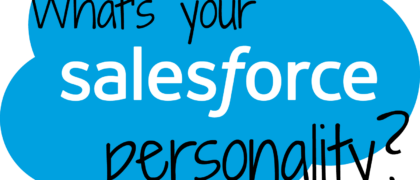Salesforce – SAP Integration
Connect Your Salesforce CRM and SAP ERP to Enable a 360-Degree View of Your Customer Data
Connect Common Salesforce and SAP ECC Integration Objects with Ease

Rapidly Automate the Sales Order Process
- Enable a consistent view of customer & contact data
- Save time and costs by eliminating manual rekeying of data into multiple systems
- Improve data accuracy and reduce errors
- Eliminate manual data validation & tracking between systems
Easy to Build Salesforce – SAP Integrations
Watch the webinar to see how fast you can implement Salesforce and SAP integrations
Rapidly Automate Order Process
“We were going to be moving a lot of data back and forth so we needed something that was going to be able to do that–but at high frequency… Jitterbit has been exactly what we wanted.”
– Cornelius Msipha, Business Solutions, Bayer
Why do you need a Salesforce - SAP integration?
Salesforce is the market leading CRM with over 10 million subscribers and 150,000 companies worldwide. SAP is a leading ERP with 230 million cloud users and 92% of the Forbes Global 2000 using the software. These two companies are among the biggest names in their respective fields. Integrating Salesforce with SAP to connect the front office to the back office is essential to drive digital transformation and gain a Customer 360. Innovating personalized experiences requires the intelligent insight into customers that can only be gained through a customer 360 view.
What are the benefits of integrating Salesforce with SAP?
Salesforce integration with SAP is essential to have a 360-degree view of customer data and enable a seamless customer journey. Salesforce handles front office information such as customer interaction and sales data. SAP handles back office information such as, customer purchase history, billing, product inventory, and financial data. The applications share common customer-related data such as Account, Contact, and Orders, and the synchronization of that data and workflows drive the customer lifecycle. Here are some of the benefits:
- Greater efficiencies. Processing orders can be slowed down by the fact that sales-related documents are scattered in Salesforce and SAP. By automating the processes to synchronize data from the two systems, you can reduce bottlenecks in the order-to-cash workstream, and reduce time delays in the fulfillment, delivery, and invoicing process.
- 360-degree view. Customer data aggregation leads to a 360-degree view which is the presentation of customer information in a meaningful way. This single source of truth helps teams to align operations and make smart decisions around the data. For example, sales representatives with immediate access to the inventory available to ship, can complete sales orders faster and provide customers a better purchasing experience.
- Personalized customer experiences. Salesforce – SAP integrations help you to gain intelligent insights on what a customer needs or wants. If you can access all that data sitting in the back office and front office, you can create uniquely tailored offerings for your customers.
- Optimized value chain. Integrating Salesforce with SAP makes better use of data throughout your company’s value chain. A complete view of customer data enables you to better predict customer demand for your products, quickly adjust to changes in the marketplace, accelerate the engineer-to-order process, and communicate more effectively.
What are the challenges associated with SAP - Salesforce integration?
SAP integration with Salesforce is not necessarily straight forward. SAP software is typically built as a back office solution, and many of its most popular offerings were created before cloud computing existed. In contrast, Salesforce is a cloud pioneer and designed primarily for front office users. Each system is different and is focused on different functions using data that often needs to be shared across an organization.
Here are some of the hurdles to an SAP – Salesforce integration:
- Lack of IT resources – The complexities and differences between SAP and Salesforce can often create large projects requiring IT resources and tools. This can lead to slow implementations.
- Complexity. SAP has an ecosystem of disparate technologies including legacy on-premises ERPs, a modern S/4HANA ERP, various SaaS solutions, and multiple integration tools. With a proprietary language, logic, and processes, integration outside the SAP ecosystem requires specific expertise. Salesforce has its own ecosystem of cloud-based applications and requires specific expertise to integrate outside its ecosystem.
- Data silos and lack of data consistency. Data silos prevent you from getting the most out of your systems. SAP data such as, invoices and product inventory is often housed on-premises. Salesforce data such as, opportunities and orders is in the cloud. Often data lacks consistency across systems which causes data mapping and data migration issues.
- Legacy Custom-Coded Integrations. Custom code reduces extensibility and prevents scalability. Older point-to-point integrations between SAP and Salesforce might have seemed expedient and less costly at the time, but these custom-coded integrations cannot be easily changed or extended.
What are some of the SAP - Salesforce integration best practices?
Here are some of the best practices on how to integrate SAP with Salesforce:
- Walk before your run; connect the most common use cases first. Start with the most common use cases and use pre-built templates, best practices, and experienced IT staff. Common use cases are Opportunity-to-Order, Account and Contact Synchronization, and Quote-to-Cash.
Once you have integrated the most common use cases you are ready to run. Take your integration to the next level using the power of the Jitterbit platform to connect additional endpoints, build real-time integration, add data points or workflows, or customize integrations without coding.
- Use pre-built integrations. Jitterbit offers these out-of-the-box integrations:
- Application Connectors provide pre-built and reusable connectivity to a specific endpoint. Salesforce Connectors and SAP Connectors are available.
- Integration Recipes are single, pre-built integrations that move data in one direction between like objects across two applications or systems.
- Process Templates are pre-built use cases that accelerate the execution of specific business processes spanning many objects across multiple applications and systems. For example, Jitterbit provides a Salesforce – SAP Process Template for the Opportunity-to-Order use case.
- Take advantage of training. Jitterbit offers Jitterbit University, an online learning management system designed to build proficiency with the Jitterbit solutions. Hands-on and lecture-based training are available for new users, advanced users, IT operations staff, and developers.
Why use Jitterbit for Salesforce to SAP integration?
Jitterbit’s agile, modern integration platform provides you with the following advantages:
- Speed. Most of our customers are up and running with their first integration in less than 30 days. But perhaps the most important factor is how fast you can build incremental integrations to deliver compelling customer experiences.
- Simplicity. Jitterbit’s Salesforce Connectors and SAP Connectors make integration easy. Integration Recipes are also available for SAP and Salesforce use cases.
- Trust. No matter how complex or straightforward your integration is, our team of experts is on hand to help you every step of the way. We’re #1 in customer satisfaction and have a 98 percent customer retention rate.
The most successful and competitive companies have connected their back and front offices. Sika, a specialty chemicals company with products for bonding and sealing for the building and motor vehicle industries, turned to Jitterbit for its Salesforce to SAP integration.
Before Jitterbit, Sika had used other products to automate data movement but the process to set up each load was totally manual, requiring hours of work every week to manipulate and transform data. With Jitterbit, Sika has fully automated this integration, connecting sales data, product mix, credit, and accounts receivable issues between SAP and Salesforce, giving the organization complete visibility to the sales process from within both applications.
Related Resources
There are more ways to take control with Harmony and iPaaS.

Deliver a Better Digital Experience with Salesforce Data Integration

What’s Your Salesforce Personality?

Get Connected: Salesforce to SAP

Connecting SAP and Salesforce for Business Critical Processes

Integrate SAP with Salesforce to Fully Automate your Digital Processes
